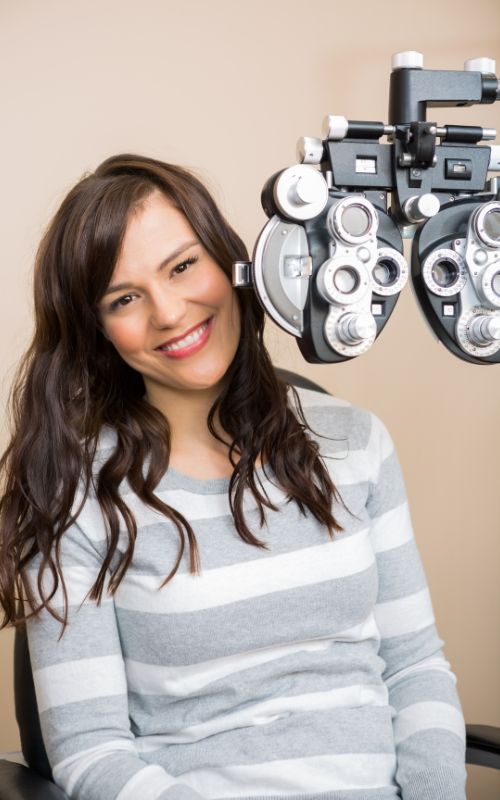In the realm of vision correction surgeries, two advanced procedures stand out for their effectiveness and popularity: EVO ICL (Implantable Collamer® Lens) and LASIK (Laser-Assisted In Situ Keratomileusis).
While both aim to enhance vision clarity and reduce dependence on glasses or contact lenses, they differ significantly in their approach and suitability for various eye conditions. Understanding the specifics of EVO ICL and LASIK, how each procedure works, who it’s best suited for, and what patients can expect in terms of results and recovery is key to making an informed decision about which is the right option for you.
What Is EVO ICL?
EVO ICL eye surgery is a revolutionary vision correction method primarily for those with severe myopia or thin corneas, who may not be ideal candidates for LASIK. Unique in its approach, EVO ICL involves the placement of a lens inside the eye, offering UV protection and maintaining the natural structure of the eye. This procedure is known for providing clear vision with minimal alteration to corneal tissue.
What Is LASIK?
LASIK eye surgery is one of the most popular and well-established vision correction surgeries. Distinguished by its use of laser technology to reshape the cornea, LASIK is ideal for addressing common vision problems like myopia, hyperopia, and astigmatism. It is celebrated for its quick recovery time and significant improvement in vision.
Is EVO ICL Better Than LASIK: The Comparison
When considering vision correction options, it’s essential to understand how EVO ICL and LASIK compare in various aspects. Having a clear picture of both procedures can help you decide which might be the best fit for your vision needs.
Suitability for Different Eye Conditions
EVO ICL is often the preferred choice for individuals with severe myopia or thin corneas, as it does not involve the reshaping of corneal tissue. It’s also suitable for patients with stable prescriptions who are prone to dry eye.
On the other hand, LASIK is more versatile, effectively treating a broader range of vision impairments, including mild to moderate myopia, hyperopia, and astigmatism. However, it may not be suitable for patients with very thin corneas or certain eye diseases.

Recovery Time
The recovery experience varies between LASIK and EVO ICL procedures. Typically, LASIK patients can expect to see a marked improvement in visual clarity within the first 24 hours after the surgery. On the other hand, recovery from EVO ICL surgery generally spans a longer period, with patients usually achieving their corrected vision over the course of 3-4 weeks.
It’s important to remember that these timelines are general estimates. Each individual’s healing process is unique, and actual recovery times may vary.
Long-Term Considerations and Cost Analysis
Both EVO ICL and LASIK offer long-lasting results. EVO ICL has the added benefit of being reversible, which could be a significant consideration for some patients.
In terms of cost, LASIK is generally more budget-friendly upfront. However, when considering the long-term savings and benefits, both procedures are competitive options.
Age and Lifestyle Considerations
Age can play a role in determining the best option. EVO ICL might be more suitable for patients under 21 or over 45, whereas LASIK is often preferred by individuals in their 20s to early 40s. For those with active lifestyles or specific visual demands, the choice may vary depending on the individual’s unique eye health and lifestyle needs.
Side Effects and Complications
Both EVO ICL and LASIK are generally safe and effective for vision correction, with the overwhelming majority of patients enjoying positive outcomes and minor side effects. EVO ICL carries a slightly higher risk of infection and inflammation due to lens implantation, but such complications are rare with proper postoperative care. Increased eye pressure and night-time glare or halos are other potential but typically short-lived side effects.
LASIK may cause temporary issues like dry eye, glare, light sensitivity, and blurred vision that generally improves within a few months. Serious complications, including infections or corneal flap problems, are very rare, occurring in less than 1% of cases.
Ready to Explore Your Vision Correction Options? Schedule a Free Consultation
Ultimately, the decision between EVO ICL and LASIK is not about choosing the superior procedure but about finding the right fit for your individual vision needs and lifestyle. At Berkeley Eye Center, we understand that each patient’s journey to clear vision is unique. Our dedicated team is here to guide you through this important decision with personalized care and expert advice.
Don’t let uncertainty about vision correction hold you back. Contact Berkeley Eye Center today to schedule a free consultation and start your journey toward a life with clearer, more vibrant vision.
